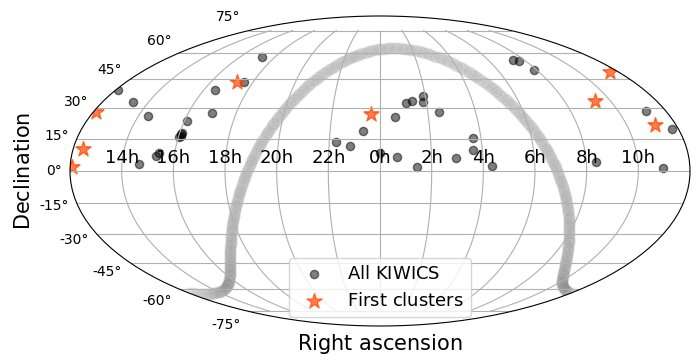Discovery of many new ultra-diffuse galaxies in galaxy clusters

In preparation for the new multi-object survey spectrograph, WEAVE, on the 4.2m William Herschel Telescope, the astronomical community is working on deep imaging surveys to identify the astronomical objects that will be studied later in more detail with WEAVE.
WEAVE will allow astronomers to take optical spectra of up to ~1000 targets at the same time in a single exposure, or to carry out integral-field spectroscopy using 20 deployable mini integral-field units or one large integral-field unit.
Galaxies like the Milky Way exist in large groups called galaxy clusters. Such associations contain a potpourri of galaxies with different properties such as colours, ages, morphologies and brightness. Among this broad diversity, there exists a bewildering population of large but extremely faint galaxies called ultra-diffuse galaxies, and understanding their properties is important to understand how the environment of galaxies affects their evolution. Since they are so faint, they are easily perturbed by the cluster environment, and therefore are ideal probes to study what happens with galaxies in the dense cluster environment.
Using the capabilities of the WFC at the Isaac Newton Telescope (INT) to explore large areas of the sky and detect faint ultra-diffuse galaxies (UDGs), a collaboration of astronomers in the Netherlands and Spain performed a study to investigate these galaxies in detail, the Kapteyn IAC WEAVE INT Clusters Survey (KIWICS).
When finished, the KIWICS survey will contain 48 X-ray selected clusters. The results for 8 clusters have recently been published in the journal Monthly Notices of the Royal Astronomical Society.
By analysing the general properties of about 500 newly-found UDGs at different distances from the centres of the clusters the researchers found several signs of environmental effects. The first result was that the larger clusters show a lack of UDGs in their centres. This is proof that the enormous gravitational forces present there are tearing these fluffy galaxies apart.
Moreover they also found that UDGs away from the cluster centre are generally younger and have less concentrated stellar distributions, showing that the gravitational potential of the cluster, which is stronger close to the cluster centre, is changing the structure of galaxies, and is removing the interstellar gas, so that no new stars are being formed in the centres of clusters.
In addition, they see that, as UDGs approach the centres of their host clusters, their morphologies are transformed from irregular discs to more spheroidal systems. In fact, for dwarf galaxies, which are similar to UDGs, but much smaller, observations in the literature give the same results.
More information: Pavel E. Mancera Piña et al. The evolution of ultra-diffuse galaxies in nearby galaxy clusters from the Kapteyn IAC WEAVE INT Clusters Survey, Monthly Notices of the Royal Astronomical Society (2019). DOI: 10.1093/mnras/stz238
Pavel E. Mancera Piña et al. Reviewing the frequency and central depletion of ultra-diffuse galaxies in galaxy clusters from the KIWICS survey, Monthly Notices of the Royal Astronomical Society (2018). DOI: 10.1093/mnras/sty2574
Journal information: Monthly Notices of the Royal Astronomical Society
Provided by Isaac Newton Group of Telescopes




















